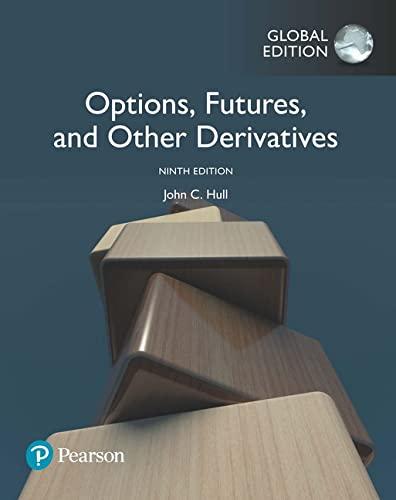Show that the (operatorname{GARCH}(1,1)) model (sigma_{n}^{2}=omega+alpha u_{n-1}^{2}+beta sigma_{n-1}^{2}) in equation (23.9) is equivalent to the stochastic volatility
Question:
Show that the \(\operatorname{GARCH}(1,1)\) model \(\sigma_{n}^{2}=\omega+\alpha u_{n-1}^{2}+\beta \sigma_{n-1}^{2}\) in equation (23.9) is equivalent to the stochastic volatility model \(d V=a\left(V_{L}-Vight) d t+\xi V d z\), where time is measured in days, \(V\) is the square of the volatility of the asset price, and
\[a=1-\alpha-\beta, \quad V_{L}=\frac{\omega}{1-\alpha-\beta}, \quad \xi=\alpha \sqrt{2}\]
What is the stochastic volatility model when time is measured in years? (Hint: The variable \(u_{n-1}\) is the return on the asset price in time \(\Delta t\). It can be assumed to be normally distributed with mean zero and standard deviation \(\sigma_{n-1}\). It follows from the moments of the normal distribution that the mean and variance of \(u_{n-1}^{2}\) are \(\sigma_{n-1}^{2}\) and \(2 \sigma_{n-1}^{4}\), respectively.)
Step by Step Answer:






